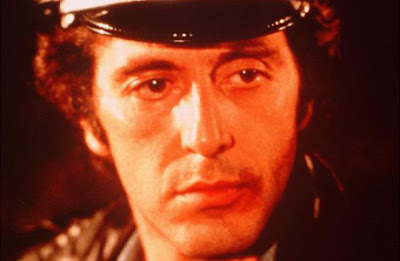 In all the anguish and rush of celebrity obits of late, it's Farrah who goes under-celebrated. Karl Malden is gone but it was certainly his time; Michael Jackson is gone and perhaps he is happier now that the spotlight is finally out of his eyes. For me, Farrah Fawcett's departure is the true tragedy of the last few weeks.
In all the anguish and rush of celebrity obits of late, it's Farrah who goes under-celebrated. Karl Malden is gone but it was certainly his time; Michael Jackson is gone and perhaps he is happier now that the spotlight is finally out of his eyes. For me, Farrah Fawcett's departure is the true tragedy of the last few weeks. She was a genuinely mythic goddess, ruling in the final decade where goddesses still commanded archetypal mystique, before videotapes made the remoteness required for such ascendancy completely impossible--the 1970s. You might even say she was the 1970s.
I remember buying her poster when it first showed up at 7-11. It was one of the first posters ever. BUT it scared the shit out of me. Never mind that nipple, take a look at her deranged eyes and anguished smile, like Marlene Dietrich after 30 takes of the same scene with Sternberg (I'm so traumatized I can't even show the poster ). I liked her on Charlie's Angels, as Jill Munroe her fearlessness and athletic prowess made her much more than a pretty face and agile mind. Where angels feared to tread, Farrah charged in. She even scuttled her contract with Aaron Spelling to go the feature film route, where she promptly bombed and fell out of favor, like David Caruso after her. If Saturn 3 (pictured below)--her big sci fi feature co-starring Kirk Douglas--had been better, she might have been a huge movie star. It wasn't her fault it bombed, but that's show biz
Instead she kind of disappeared until returning as a serious dramatic actress in The Burning Bed and The Apostle, a decade or so later. It doesn't matter that she later won respect as a hard-bitten actress capable of drama and flighty comedy (she played the racist wife of Danny Glover in The Cook-Out if you care, and you should). All that matters is that she was a goddes of the 1970s and everyone dug her hair, I mean everyone. All that horrible "pouffy" hair in the 1980s might even have been her fault, in a way, the mutated evolution of her feathery wisps writ large and gaudy on the newly emerged MTV generation. Even the second season of Charlie's Angels fell in. You can suddenly see the Farrah hairdo all over the extras, the bit players, and Jaclyn Smith.
 It's a tragedy that we lost her, and a tragedy that her death's been overshadowed by Michael Jackson's. I don't mean any disrespect to Mr. Jackson, who perhaps united more of the world and for longer in his rein than Farrah did or could or probably would ever want to. While Jackson's mythic presence spans his own lifetime since childhood, Farrah's is rooted in a single pop cultural moment, but it's not a race, at least not a race anyone wants to win. In fact we're all walking as slow as we can towards that inevitable credit roll finish line, but now, wherever we're going, we can hope our angel Farrah will be working the reception gate like it's a Honolulu airport, ready to set our nervous hearts at ease with a lei, a flash of a smile and a shake of her golden feathery tresses.
It's a tragedy that we lost her, and a tragedy that her death's been overshadowed by Michael Jackson's. I don't mean any disrespect to Mr. Jackson, who perhaps united more of the world and for longer in his rein than Farrah did or could or probably would ever want to. While Jackson's mythic presence spans his own lifetime since childhood, Farrah's is rooted in a single pop cultural moment, but it's not a race, at least not a race anyone wants to win. In fact we're all walking as slow as we can towards that inevitable credit roll finish line, but now, wherever we're going, we can hope our angel Farrah will be working the reception gate like it's a Honolulu airport, ready to set our nervous hearts at ease with a lei, a flash of a smile and a shake of her golden feathery tresses.



















































